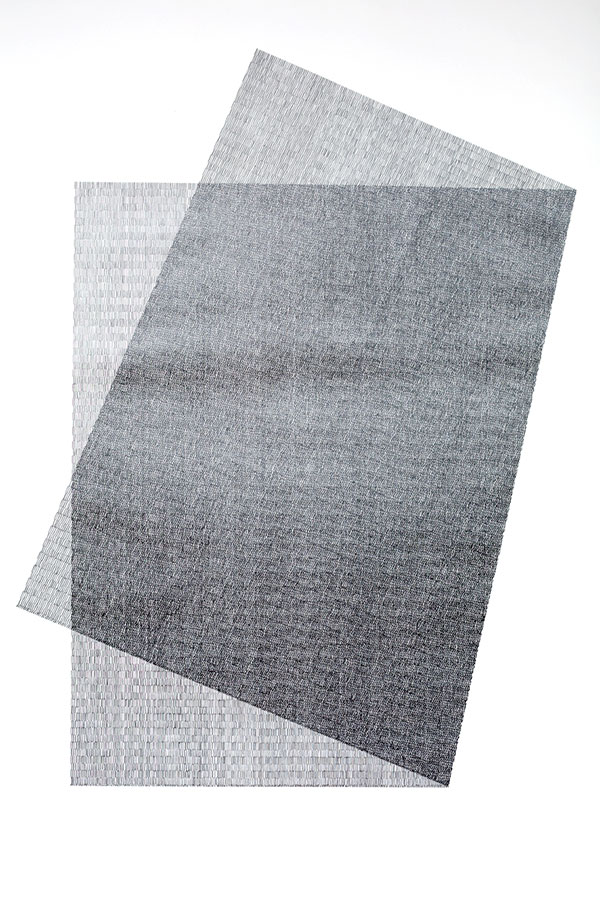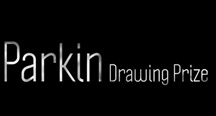Parkin Drawing Prize – winners: Where are they now?
Monique Jansen’s work AO Folded Moire Drawing was chosen as the winner of the inaugural Parkin Drawing Prize in 2013. Her work was selected from an impressive 800 submissions nationwide and 115 finalists at the opening of The Parkin Drawing Prize exhibition at the New Zealand Academy of Fine Arts.
We caught up with Monique to find out what she’s up to these days and the impact the Parkin Drawing Prize had on her life.
What are you doing now?
I am still based in West Auckland and lecturing in the Visual Arts degree at the Auckland University of Technology. My exhibiting practice has slowed right down in the last few years as I am more focused on working in the community, doing ecological projects, permaculture, and gardening. I am involved in a research group called Drawing Open and we are currently working on a project called Te Waituhi ā Nuku: Drawing Ecologies, based in the Kapiti/Horowhenua rohe. I am developing a biochar project, in collaboration with Phil Stevens from Slow Farm, and we are making biochar sourced from biomass from the site and using it to create biofilters for wetland restoration. I still use drawing in a bunch of different ways; generative, speculative, notational and for final works of art. Weirdly, charcoal was my first ‘art-love’ at high school, and I am still working with it, all these years later.
How did your Parkin win help you and your career?
I won the inaugural Parkin Drawing Prize, which was so exciting. I entered because I was so happy that drawing was being acknowledged as an important artform and I wanted to support the award. I never dreamed that I would win it. Winning the award validated having drawing as my main art practice. Since the prize, I have become more invested in thinking about art’s carbon footprint. I have been developing a modest and frugal practice that is very conscious of the life cycle of the materials that I use. I guess this is why drawing appeals to me, especially when I use paper and very simple materials like charcoal or pencil, as there is very little bling or waste going on! For instance, I made a drawing performance work at Te Uru Gallery in Auckland, as part of the Oceanic Performance Biennial in 2017. The theme of the biennial was “Heat: Solar Revolutions” and was focusing on the carbon cycle. I set up a worktable in the gallery and worked for four days straight, in front of the gallery visitors. I was drawing with biochar on acid-free paper and talking with the gallery visitors about the need for carbon sequestration. At the end of the exhibition, my work was de-installed, shredded and added to my compost heap and subsequently into my productive garden. The attempt here, was to insert the artwork into an ecological loop, rather than it sitting in a storeroom, serving no ecological function. Paper and biochar are both carbon rich – so this work was putting the carbon, harvested to make the paper and biochar, back into the soil where we need it. FYI – my tomatoes were particularly good that summer!
What did you end up spending your money on?
I would like to say that the prize money went towards a romantic, trip of a lifetime, to visit artists and galleries to check out the international drawing scene but my prize money went towards something much more practical and pragmatic… re-roofing my studio! So, I now have a lovely dry studio, which is better for taking care of works on paper. And I bought more drawing materials like large rolls of art paper, which meant that I didn’t have to be too precious when starting new, large-scale work, which helps with experimenting and taking risks. I am a rather practical person, and I don’t like waste, so spending money on my studio seemed like a good, long-term use of the money. Prioritising my studio space and my drawing practice has been really grounding and affirmative.

Monique Jansen | AO Folded Moire Drawing | 2013
